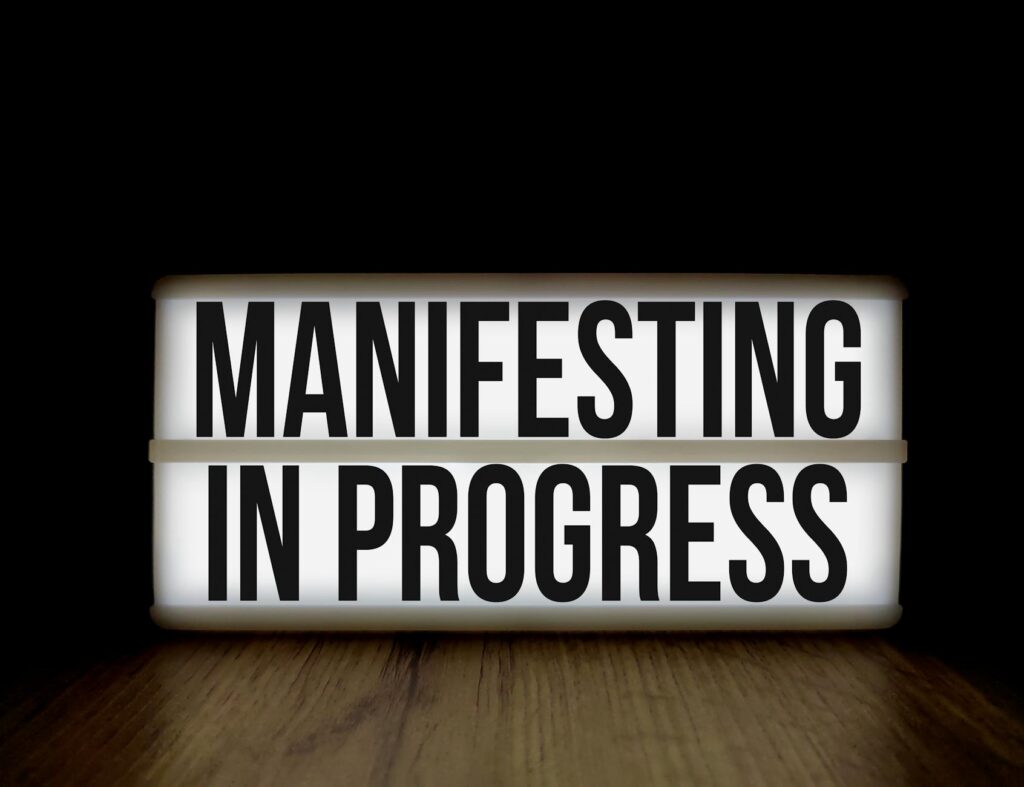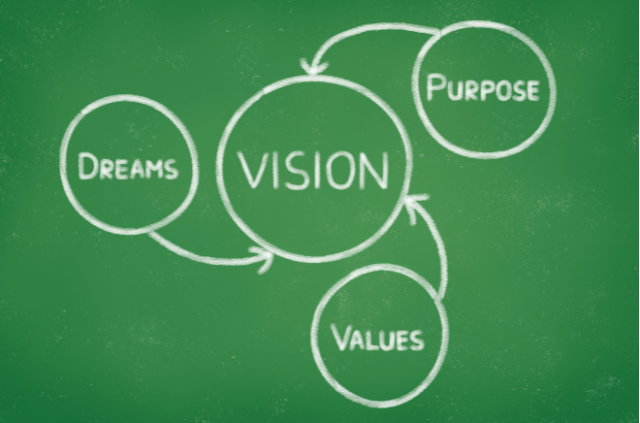For many couples, retirement planning can feel overwhelming. But what if there was a creative, visual way to bring your goals into focus? Vision board retirement planning for couples is a fun and motivating method that helps you map out dreams, set priorities, and stay on track. Studies show couples who plan their financial future together are more likely to succeed. A vision board isn’t just for big-picture goals; it keeps you grounded and aligned as you build your ideal retirement.
Understanding Why Vision Boards Work in Retirement Planning
When it comes to vision board retirement planning for couples, having a clear, shared vision isn’t just symbolic—it’s a practical tool that can guide your financial and lifestyle goals. Vision boards do more than look pretty; they help crystallize ideas, align priorities, and motivate couples on their retirement journey. Here’s how they work and why they’re effective.
What is a Vision Board?

A vision board for retirement planning for couples is a creative tool that visually represents your shared goals and dreams. Whether you aim to travel the world, downsize to a cozy home, or achieve financial freedom, a vision board can serve as a personalized roadmap.

Why does it work? It taps into the power of visualization. Seeing your goals daily reinforces them in your mind, helping you stay focused and motivated. Think of it like plotting your destination on a GPS. How would you expect to arrive at your ideal retirement without a precise address?
Why It’s Effective for Joint Retirement Planning

Vision board retirement planning for couples isn’t just about crafting something visually appealing; it’s about fostering better communication, clarity, and teamwork. By building a shared vision, you stay motivated and aligned on what matters most for your future. Here’s why they shine in joint planning:
- Strengthens Communication: Discussing what to put on the board forces meaningful conversations. Do you both want the same lifestyle? Is early retirement a shared priority, or does one partner prefer working longer? Visualizing these answers ensures you’re on the same page.
- Aligning Shared Goals: Couples often have overlapping aspirations but may not realize it. A vision board lays everything out visually, helping sync up goals like saving for a beach house or planning a family reunion trip after retirement.
- Boosting Teamwork: Retirement planning can feel like a solo task, but vision boards make it collaborative. It’s about dreaming together and finding the steps to make those dreams come true.
- Building Motivation: Life gets busy, and staying motivated is hard. A vision board serves as a constant reminder of why you’re budgeting, saving, or investing. It’s a small nudge that helps keep your eyes on the prize.
Research shows visualization is powerful in achieving goals for athletes and anyone working toward a purpose. Positive Visualization: The Scientific Benefits highlights its role in boosting confidence and focus, keys to retirement success.
To get started, check out resources like Make Your Dreams a Reality With a Retirement Vision Board for handy tips on gathering images, setting themes, and creating a space that speaks to you both.
Preparing to Create a Vision Board
Creating a vision board for retirement planning for couples starts with intentional discussions, financial goal-setting, and gathering supplies. Here’s how to lay a strong foundation for your shared vision.

Set a Specific Financial Goal Together
Before you start gathering supplies or cutting out images, being on the same page financially is crucial. Sit together and determine a retirement savings target and an ideal retirement age. How much do you need to live comfortably? Would you prefer to retire early or maximize savings by working longer? Without these anchor points, it’s like setting sail without a destination.
- Discuss your current savings. Are you on track, or do adjustments need to be made?
- Define lifestyle expectations. For example, are you planning luxury trips or a simpler, laid-back retirement?
- Use tools or guidance, like How to Set Financial Goals for Your Future, to make a realistic decision.
Taking the time now to pinpoint your financial “north star” will ensure that your vision board supports achievable goals rather than vague aspirations.
Gather Tools and Supplies
Now that you’ve nailed down your foundation, it’s time to gather your toolkit. Whether creating a traditional board with scissors and glue or going digital, having the right materials can make the process seamless and enjoyable. Here’s a checklist to get you started:
Physical Supplies:
- A sturdy board (poster board, corkboard, or foam board)
- Magazines, newspapers, or printed images
- Scissors, glue, or tape
- Markers, pens, or stickers for customization
Digital Tools:
- Online platforms like Canva or Pinterest for virtual boards
- Vision board apps to organize graphics
- High-quality images downloaded online to represent your goals
If you want detailed ideas to refine your toolkit, explore Vision Board Materials to find specifics suited to your style.
Have an Honest Discussion About Your Dreams

Creating a vision board is an opportunity for open conversations about your hopes and dreams for retirement. What does your ideal retirement look like? This might feel like an easy question, but often, couples discover differences in their visions. One partner may envision travel across Europe, while the other dreams of a quiet home in the countryside.
Here’s how to make it a meaningful discussion:
- Ask Open-Ended Questions: “What’s the one thing you’ve always wanted to do when you retire?”
- Share Personal Aspirations: Talk about solo hobbies or personal goals that matter to each of you.
- Negotiate and Compromise: Find ways to incorporate shared dreams while respecting individual ones.
If you’re unsure how to start, use practical tips like those offered in How To Talk Retirement With Your Spouse to foster positive communication.

By achieving financial clarity, gathering the right tools, and sharing heartfelt conversations, you’re not just preparing for a vision board but setting a strong foundation for joint retirement planning.
Step-by-Step Guide to Creating a Joint Retirement Vision Board
Building a vision board together is more than crafts and cutouts—it’s a visual, actionable way to articulate, align, and organize retirement goals as a couple. Think of it as a map for your future happiness and stability. Whether dreaming of exotic adventures, quiet mornings in a cozy cabin, or ensuring financial freedom, creating a joint vision board ensures you work toward these aspirations collaboratively. Let’s break it all down step by step.
Step 1: Define Your Retirement Goals
In vision board retirement planning for couples, defining goals is essential. Discuss both financial and lifestyle goals with your partner and break them into actionable steps.
- Financial Goals: How much do you need saved? Will you rely solely on your retirement fund, or will there be investment income? What’s your plan for healthcare costs or unexpected expenses? These questions ground your vision board in financial reality.
- Lifestyle Goals: What kind of life are you envisioning? Do you want to travel extensively, relocate, or dedicate time to hobbies and volunteering? The more specific you are, the more vivid your goals become.
Having clear financial and lifestyle targets will keep your vision board focused. Looking for tips on setting retirement goals? Make Your Dreams a Reality With a Retirement Vision Board offers excellent insights.
Step 2: Identify What’s Most Important
Prioritization is crucial when creating a vision board for retirement planning for couples. Find common goals while respecting individual aspirations.
- What are our top three shared retirement goals?
- Are there any non-negotiables for either of us?
- How will we handle differences, such as one partner wanting to travel while the other prefers to stay local?
Use this process to highlight areas of overlap. Perhaps both of you value home remodeling or want to spend summers abroad. Aligning your core priorities builds harmony and strengthens your planning. If challenges arise, check out How to Create a Vision Board as a Couple for tips on negotiating and blending ideas.
Step 3: Collect Visuals That Represent Your Goals
Whether through magazines, online images, or custom designs, visuals should clearly express the shared goals of your vision board retirement planning for couples. Here’s how you can approach it:
- Travel Goals: Photos of dream destinations, beaches, mountains, or cities.
- Lifestyle Details: Garden landscapes, yoga poses, or art supplies.
- Financial Freedom: Piles of coins, calculators, or investment charts.
- New Milestones: Pictures of houses, RVs, or volunteer organizations you want to join.
Aim for images that resonate with both of you. This adds a personal and emotional touch to the board.
Step 4: Arrange the Board for Maximum Clarity
Now, it’s time to piece everything together. Lay out your visuals in a way that’s clear and meaningful. Here’s how to approach layout design:
- Group Similar Goals Together: Travel images in one section, financial visuals in another.
- Create a Timeline: Arrange goals chronologically if timing is a factor (e.g., saving first, then traveling).
- Leave Room for Updates: Life and your goals will evolve. Ensure your board can be updated without starting from scratch.
If you’re making this digital, platforms like Canva provide great templates. For physical boards, corkboards allow easy changes over time.
Step 5: Place the Vision Board Somewhere Accessible
Visibility is key to keeping your goals alive and motivating action. Where should it go? Here are a few ideas:
- Home Office: Perfect for reminding you to stay financially disciplined.
- Bedroom: Seeing it daily is a constant motivator.
- Shared Living Spaces: Great for joint accountability.
The key is finding a space you both naturally interact with. If you opt for a digital version, save it as your desktop or phone background.
Following these simple steps and fostering open communication, your vision board becomes a shared commitment, bringing your joint retirement dreams to life.
Maintaining and Revisiting Your Vision Board
A vision board is not a “set it and forget it” tool. Revisiting and maintaining it is essential to keeping it effective. Retirement planning evolves as life changes, and your vision board should reflect these shifts. Whether adjusting for unexpected opportunities or celebrating achievements, refreshing your board ensures it stays relevant and motivating.
Reevaluate Goals Regularly: Establish timelines for regular check-ins
Retirement goals can evolve, especially as life circumstances shift. Checking in on your vision board allows you to measure progress and refine your objectives. But how often should you do this? Aim for quarterly or biannual reviews to stay on track.
Here are some tips for effective goal reevaluation:
- Set specific check-in dates: Add reminders to your calendar to ensure you don’t overlook this step.
- Assess current goals: Are you closer to achieving them? Do they still align with your values?
- Incorporate new inspiration: Sometimes, new priorities or opportunities might arise. Reflect on these and see how they fit your vision.
- Remove outdated goals: If a specific goal no longer resonates, it’s okay to let it go.
If you’d like ideas for keeping your board fresh, check out How to Make a Vision Board That Works.
Celebrate Milestones: Discuss how to acknowledge progress positively
Hitting milestones in retirement planning isn’t just about finances but celebrating smaller steps toward your shared vision. Recognizing your progress can keep you motivated and enthusiastic about the journey ahead.
Here are some ways to celebrate and stay inspired:
- Host a mini celebration: If you reach a savings goal, plan a special dinner or outing to mark the occasion.
- Add symbols to your board: Place visuals or notes commemorating achieved milestones directly on your vision board. This serves as a motivating reminder of what you’ve already accomplished.
- Share your success: If you’re comfortable, share your progress with close family or friends to create accountability and support.
- Use milestones as motivation: Reflect on past wins to fuel your energy for tackling the next steps toward your goals.
For inspiration on approaching financial and lifestyle milestones, visit Key Milestones as You Near and Start Retirement. By reevaluating regularly and appreciating your progress, your vision board becomes a dynamic tool that grows with you and your partner as you move toward retirement.

Benefits of Using a Vision Board for Retirement Planning

Retirement should be a time of joy and relaxation, but the planning process can feel like uncharted territory. A vision board transforms abstract goals into vivid realities, creating a clear roadmap for your golden years. By tapping into visualization and practical planning, vision boards are more than creative tools—they’re pivotal for maintaining focus and fostering joint communication. Let’s explore how they enhance retirement planning.
Clarity in Life Goals
A vision board helps crystallize your vision for retirement in ways that numbers and spreadsheets can’t. When you create a visual representation of your dreams, every image adds specificity and depth. Suddenly, retirement isn’t just an idea; it’s a collection of tangible, actionable goals.
For instance:
- Travel aspirations: Pictures of destinations can spark meaningful discussions about saving for travel.
- Lifestyle preferences: Peaceful countryside homes or bustling cityscapes help define whether downsizing or relocating is part of the plan.
Seeing images daily keeps these ambitions front of mind and cultivates accountability. If you’re curious about the science, Make Your Dreams a Reality With a Retirement Vision Board dives deeper into how visualization reinforces commitment.
Enhanced Communication for Couples
Retirement affects both partners and aligning your visions early is crucial. Discussing what to include on your board can uncover hidden dreams or unspoken concerns, paving the way for open communication.
Here’s why it works:
- Understanding differences: One partner might focus more on financial freedom, while the other dreams of community involvement.
- Strengthening compromise: A vision board is a neutral platform to merge ideas without conflict.
Think of it as a visual diary for your shared dreams, one that makes even sensitive topics easier to navigate. Resources like The Transformative Power of Vision Boards highlight how they foster deeper conversations and mutual understanding.
Motivation to Stay on Track
Let’s face it: sticking to long-term plans isn’t always easy. However, having your goals visually displayed acts as a powerful motivator. Vision boards trigger an emotional connection that keeps you invested, even when obstacles arise.
Key motivational benefits include:
- Daily reinforcement: Seeing your vision board is a gentle nudge to stay disciplined with saving or budgeting.
- Celebrating milestones: Add achievements or progress markers to your board, turning it into a dynamic reflection of your journey.
Visualization is more than wishful thinking—it becomes a habit of resilience. Vision Board Techniques to Boost Motivation offers techniques to amplify this effect, ensuring you stay inspired over time.
Simplification of Complex Decisions
Retirement planning involves an array of choices, from when to retire to how to manage expenses. A vision board simplifies this by visually organizing your priorities, breaking huge goals into digestible steps.
For example:
- Visual timelines: Arrange images in a sequence to represent short-term and long-term plans.
- Categories: Separate financial, emotional, and lifestyle goals for a well-rounded perspective.
This makes planning feel manageable and reduces the chance of overlooking critical details. Need some guidance? Create a Vision Board for a Picture-Perfect Retirement explains how to tailor your board for maximum clarity.
Incorporating a vision board into retirement planning goes beyond creativity; it’s about aligning, motivating, and simplifying your path to the future you deserve.
Tips for Success
Creating a vision board for joint retirement planning is both practical and inspiring. It’s a way to visualize your shared goals, align priorities, and stay motivated as a team. To make the most of the process, remember these key tips.
Keep the Process Lighthearted and Fun
Making a vision board shouldn’t feel like a chore. Instead, focus on enjoying the time you’re spending together. Turn it into a low-pressure, exciting activity. Play music you both love, sip on some coffee or tea, and let the creativity flow.
Why not make it a mini-event? Set aside an evening, gather supplies, and laugh about the quirky clippings you find in magazines. The more relaxed and fun the process is, the more memorable and meaningful your board will be.

Include Lifestyle Aspirations
A comprehensive vision board balances financial and personal goals. Retirement is not just about money; lifestyle matters, too. Think beyond savings and consider how you want to spend your days.
Here are some areas to explore:
- Travel and leisure: Where do you dream of visiting?
- Hobbies and passions: Are there skills or activities you’ve been waiting to try?
- Residency plans: Picture the type of home or community you want.
Blending these lifestyle aspirations with financial goals provides a complete picture of your retirement dreams. Check out Create a Vision Board for a Picture-Perfect Retirement to learn more about focusing on both aspects.
Be Realistic Without Limiting Dreams
Strike a balance between ambition and practicality. Dream big and consider the resources and time needed to achieve those goals. For example, it’s okay to aim for frequent travel if you have a budget to support it.
Think of your vision board as a map: big dreams mark your destination, but realistic steps ensure you get there. Include actionable ideas—like increasing savings, downsizing, or finding passive income streams—to bring larger goals closer to reality. 3 Steps to Creating a Wealth Vision Board offers guidance on balancing aspiration with action.
Make It a Bonding Experience
The actual value of a vision board isn’t just in the visuals; it’s the connection it fosters. Use this activity as an opportunity to bond on a deeper level. Open up about personal goals, listen to one another, and find common ground.
Ways to make it meaningful:
- Share stories about why specific images resonate with you.
- Reflect on past accomplishments and how they shaped your current dreams.
- Emphasize teamwork by blending individual and intentionally shared aspirations.
This is your chance to connect as partners working toward a unified future. For additional insights, visit Creating a Retirement Vision Board to explore how vision boards foster collaboration.
Remember, the joy of retirement planning lies in dreaming together. Keep the process dynamic, grounded, and an expression of your shared journey ahead!
FAQs About Vision Boards and Retirement Planning
Vision boards are a versatile tool for planning retirement, aligning goals, and sparking meaningful dialogue. This section answers common questions couples may have about using vision boards for retirement planning.
What materials do I need to create a vision board?
Creating a vision board starts with gathering simple materials. For physical boards, you’ll need:
- A sturdy base like a poster board, corkboard, or foam board.
- Magazines, newspapers, or printed images that inspire you.
- Adhesives like glue or tape for assembling your board.
- Markers, stickers, or other decorative tools for customization.
If you’re going digital, use free tools like Canva or Milanote to make designing a vision board on your device easy. These platforms offer intuitive templates and creative options to bring your vision to life. For additional inspiration and tips, check out What Materials Do You Need To Create A Vision Board?
Can a digital vision board be as effective as a physical one?
Both digital and physical boards have their strengths. A physical vision board offers a tactile, hands-on experience, encouraging creativity and presence. On the other hand, digital vision boards are portable, editable, and easy to access on your phone or laptop.
A digital board might be more practical if you’re always on the go. Want something permanent to display at home? A physical board could be the way to go. The choice depends on your preferences and lifestyle. For insights on making the right choice, look at Digital or Physical Vision Boards: What’s Your Best Match for Success?
How often should my partner and I update our vision board?
Your vision board should evolve with life. Aim to review and update it every 6 to 12 months. This timing allows you to adjust for changes in priorities or finances while keeping your goals relevant and motivating.
If you’ve achieved a milestone, celebrate it by adding new visuals. If your goals shift, rework your board to reflect your updated vision. A regular reassessment ensures it remains a living, dynamic tool. For more guidance, explore How Often Should I Update My Vision Board?
What if my partner and I have very different retirement goals?
Differing goals don’t have to be a roadblock. Start with an open conversation about your individual aspirations. Look for areas of overlap and build on shared values. Compromise where necessary, and be willing to combine goals into a unified vision.
For example, if one partner dreams of travel and the other prefers a quiet home life, you might agree on part-time travel balanced with time at home. Resources like How To Bridge the Gap When You and Your Spouse Have Different Visions of Retirement help navigate these conversations.
How long does it typically take to create a vision board?
There’s no set timeline; it depends on how detailed you want to be. If you’re working on a simple board, it might take just an hour or two. You could spread the process over several days for a more comprehensive vision.
Some couples prefer to treat it as a fun weekend project, while others may break it into shorter sessions. Whatever you choose, focus on making the experience enjoyable and meaningful. For ideas on pacing, read How to Make a Vision Board: Step-by-Step Guide.
Are vision boards only applicable to couples with large retirement goals?
Not at all! Vision boards work for goals big and small. Whether saving for a modest retirement or planning extravagant trips, visualizing your aspirations helps keep you motivated and aligned.
Even simple goals like gardening, volunteer work, or downsizing can find a place on your board. A vision board isn’t about the scale of your goals; it’s about clarity and focus. Check out Make Your Dreams a Reality With a Retirement Vision Board for inspiration tailored to any retirement plan.
What are some free tools for making an online vision board?
Digital tools simplify creating a vision board from your phone or computer. Some popular options include:
- Canva: Offers templates and design elements for visually stunning boards. Free Online Vision Board Maker.
- Milanote: Ideal for organizing visuals and creating boards digitally. Free Digital Vision Board Maker.
- Venngage: Features easy-to-edit templates for clear, creative layouts. Online Vision Board Maker.
These platforms are user-friendly and perfect for couples creating a shared vision board without physical materials.
Conclusion
Vision board retirement planning for couples is more than a fun project; it’s a powerful way to align, plan, and motivate each other. Start building yours today, and watch your shared retirement dreams take shape!
What’s your first image? Pin it now and take the first step!









Add comment